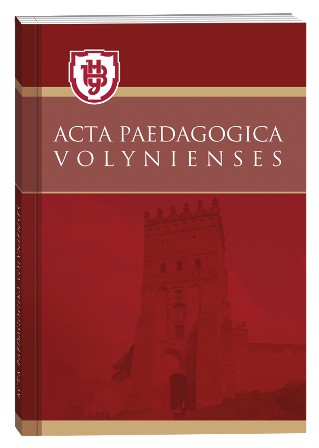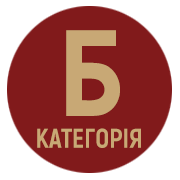STUDENTS’ PATHOPHYSIOLOGICAL STUDY CIRCLE IN THE RETROSPECT OF TIME TO THE PRESENT DAY
DOI:
https://doi.org/10.32782/apv/2022.4.21Keywords:
medical university, extracurricular work, department of pathophysiology, student scientific circle, history of activity, achievementsAbstract
The leading place in extracurricular activities is occupied by activities in the circle. It is one of the most important way of improving the quality of training in higher education. This is a set of activities of scientific, methodological, organizational origin, which provides training of all students in research skills in accordance with the chosen specialty within the educational process and beyond. Science contributes to the improvement of professional training, the identification of the most talented young people. The scientific work of students is carried out in order to realize the intellectual potential, increase creative initiative to improve the training of the new generation. Participation of medical students in the pathophysiological circle of Ivano-Frankivsk National Medical University is a theoretical basis for gaining knowledge of the etio-pathogenesis of many pathological processes and diseases, a practical basis for their experimental modeling to analyze the dynamics of changes in pathology and treatment and prevention tasks. work. Persistent and active work in the circle forms in students a constant desire for development and self-improvement, to gain strong leadership skills, interest in socio-medical problems of today and the further development of highly qualified specialists and scientists. The activity of the pathophysiological circle has been going on for over 70 years since its foundation. In this review, the names of not all students who have passed the school of independent research in the department circle are mentioned. This list is constantly updated today. The experience, skills and knowledge gained during the student years become the basis for the birth of a new and new generation of doctors, scientists and also pathophysiologists. The authority of the circle constantly attracts new hard-working students to its team, is replenished with new ideas and scientific directions, and the staff of the department is committed to passing on their rich experience and knowledge.
References
Аніщенко О. Тренди освіти дорослих: реалії та перспективи. Науковий вісник Мелітопольського педагогічного університету ім. Богдана Хмельницького. Серія : Педагогіка. 2015; 1:155–160.
Бистрова Ю. В. Інноваційні методи навчання у вищій школі. Науковий вісник Херсонського державного університету. 2015; 4:19–21.
Калашнікова Л. М, Жерновникова О. А. Педагогіка вищої школи у схемах і таблицях : навчальний посібник. 2016:260.
Коломієць А. М. Сучасні методологічні підходи в організації вищої педагогічної освіти. Науковий вісник Південноукраїнського національного педагогічного університету імені К. Д. Ушинського. 2016; 3:47–52.
Коротун ОВ. Методологічні засади змішаного навчання в умовах вищої освіти. Інформаційні технології в освіті. 2016; 3:117–129.
Пасмор Ю. В. Сучасні проблеми цифровізації в інноваційному суспільстві. Стратегії розвитку Харківської області на період 2021–2027 років : зб. наук. пр. за матеріалами круглого столу. 2020:78–84.
Сіданіч ІЛ. Актуальні проблеми духовно-морального виховання студентської молоді. Наукові записки. Серія “Психологія і педагогіка”. 2013; 23:233–241.
Хатнюк НС. Ділова та рольова гра як метод активного навчання: прикладний аспект. Освіта. 2014; 7:38–45.
Хриков ЄМ. Методологія педагогічного дослідження : монографія. 2018:294.
Шевченко ГП. Виховання – процес людинотворчості, культуротворчості, духотворчості. Духовність особистості: методологія, теорія і практика. 2015; 3(66):288–299.







